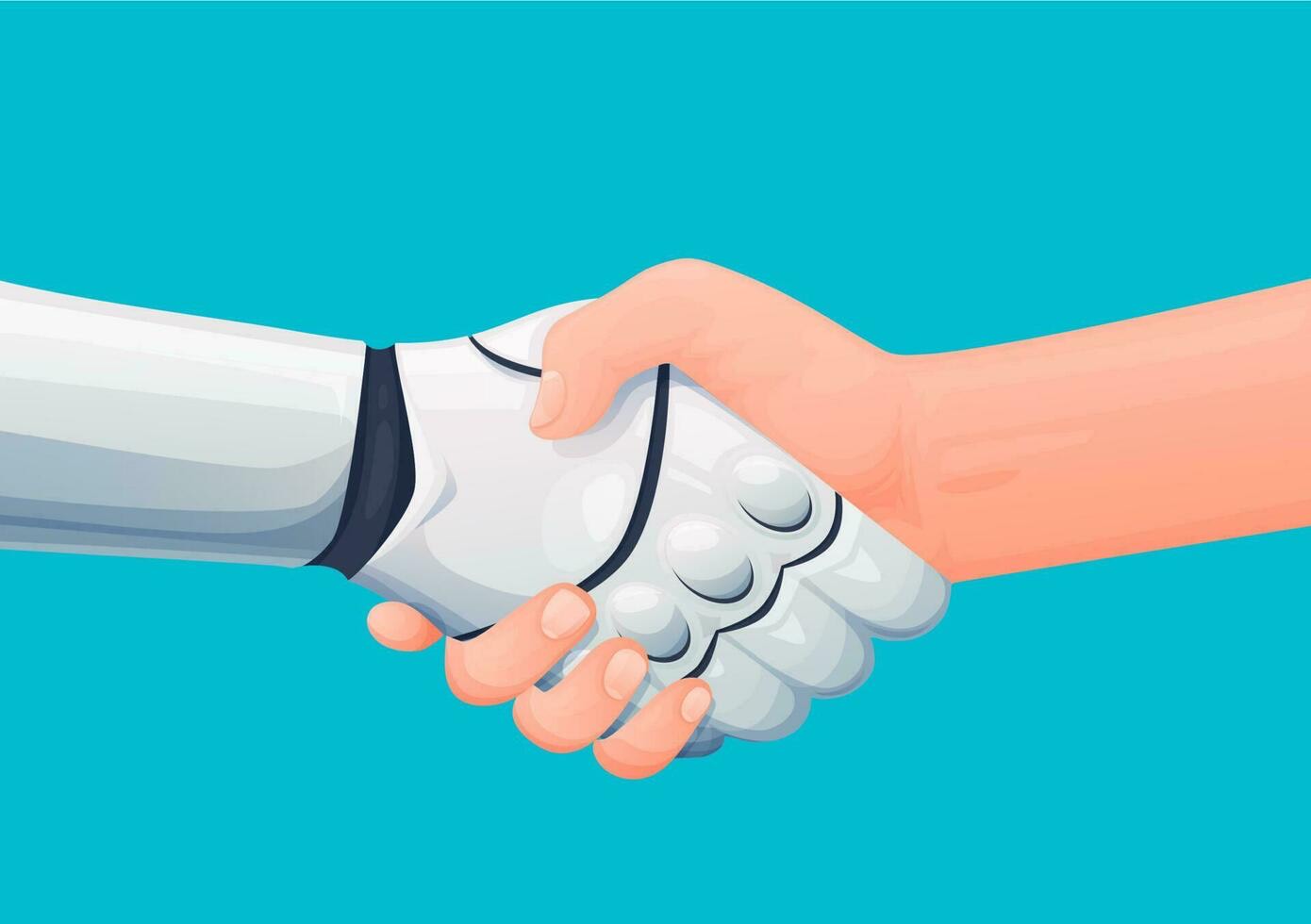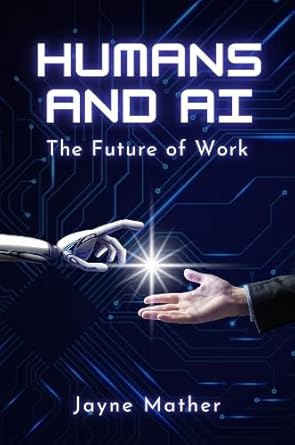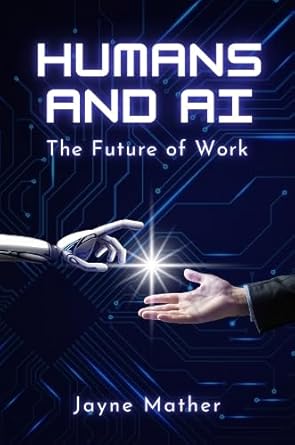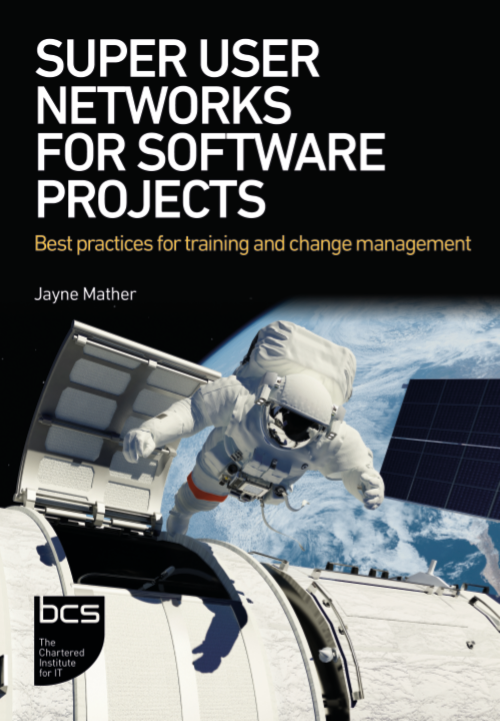Humans and AI: Creating the Future of Work we all want
Published: Saturday 8th of February 2025

My new book Humans and AI: Future of Work was written to offer both guidance and inspiration for how to 'Embrace AI for Good, redesign work with the right intentions, and reshape our world'. The book offers a blueprint for adopting AI responsibly. Whether you're a leader striving to future-proof your organisation or an individual navigating concerns about technological change, my insights aim to resonate with clarity and urgency.
My career and expertise has always been in helping organisations to adopt the latest technology, but I’ve always done that in ways that put people, and users, first. This book is no different. Because no matter what technology advances we use, it is motivated people that make things happen.
Redesigning the Organisation
The future of work needs a new approach to organisational design. Successful organisations will be those that seamlessly blend human ingenuity with AI capabilities. By following the frameworks I outline, leaders can craft workplaces that drive productivity, efficiency, profitability, and innovation while still prioritising employee well-being and security.
Key to this transformation is a cultural, not just technological, shift. My roadmap empowers leaders to craft bespoke designs tailored to their unique visions, from the radical to the subtle, ensuring technological advancements work as a force multiplier for success.
Preventing Job Displacement
AI transforms workplaces rapidly, which creates mixed feelings of excitement and worry among professionals worldwide. People fear robots might replace their jobs, but the vision of the workplace I offer looks different from these concerns.
But first imagine a world, a society, the poverty and crime levels, if all the companies in the world displaced workers in favour of robots. People need to be at the centre of our redesign, because yes, passing tasks, jobs, and processes to robots can give us efficiencies and cost-savings and increased revenue, but robots don’t have ambition, creativity, and drive; people do.
We should also remember that robots do not pay tax, and robots do not spend money in our businesses, people do. Keeping an active workforce who contribute taxes and have disposable income is essential for economies to operate successfully. Organisations who want to operate in a thriving economy need to carefully enact policies that utilise the technology, but also prioritise the job security of employees and the health of the economy.
We need organisations, governments and institutions to work together to implement ethical frameworks that balance tech advances with human needs, including:
- Supporting ongoing people development through digital skills programmes
- Keeping jobs secure by focusing on increasing rather than replacing roles
- Creating support mechanisms and a clear path forward for roles affected by AI and automation
- Making sure AI’s benefits reach everyone fairly
Success depends on a shift from viewing technology as worker replacement to understanding how humans and machines complement each other.
Empowering Workers Through Human-Centric AI
AI can enhance, not replace, human endeavours. By aligning human strengths with the capabilities of cognitive computing, we can create workplaces that value a synergy of AI and humans working together, enabling leaders to free employees from repetitive tasks, unlocking their capacity to innovate, create, and above all, value human connection.
Human-AI partnerships excel when each participant's unique strengths receive recognition and respect. We need humans to oversee AI systems to ensure the technology operates without bias and serves its purpose, aligned with our intentions. The most successful partnerships happen when:
- Humans focus on relationship building, empathetic decision-making, and creative problem-solving
- AI handles data processing, pattern recognition, and routine task automation
- Teams collaborate with clear responsibilities and open communication
For workers, AI can be a tool that liberates time and energy. Freed from mundane tasks, employees can engage in higher-value activities like strategic thinking, problem-solving, and personal development. Imagine a workplace where employees have the "gift of time" to focus on what truly matters. Such a vision isn’t utopian; it’s achievable through the principles laid out in my book.
Using AI for Social Good
My vision extends beyond organisational walls, advocating for a collective, global commitment to use AI ethically and responsibly.
We need to act with intention for how the use of AI, robotics, and other cognitive tech advances will shape the future of work. We have an unprecedented opportunity right now to use AI for good in the world, and to enhance the lives of workers, not replace them. But we cannot leave this to chance, we need to establish trust that those building the technology and those regulating the technology will work to make things better for all of us.
AI must be a force for social progress. I envision a future where reduced working hours, universal basic income, and increased focus on arts, culture, and community engagement become the norm. By adopting AI responsibly, we can create a more equitable world where technology enhances happiness and prosperity for all.
Practical Strategies for Leaders
Humans and AI: Future of Work is full of practical advice for leaders navigating the complexities of digital transformation. The book ranges from exploring the use cases of AI and its' benefits, to frameworks that establish AI-decision making, to the learning paths we need to upskill our people, to strategies we can use for role augmentation, all wrapped in the principles of human-centric policies that our employees can trust.
You'll learn about practical strategies for human-AI collaboration and ways to prioritise people. I provide tools to drive change and adoption effectively and stress the importance of involving employees in the redesign process, creating a culture of collaboration and collective ownership for delivering the vision.
Why This Book Matters
In a sea of experts and literature on AI, I want this work to stand out not just as a guide to technological adoption; but as a manifesto for building a better future. My holistic perspective—combining innovation, ethics, and empathy—challenges leaders to not only think about profits or efficiency, but consider their broader impact on society.
I promise you that by following the steps in this book to implement AI, you will make more money. I promise you that your organisation will thrive. It’s not a bad thing to want this.
But wouldn't it be wonderful to realise those benefits while simultaneously changing the world? As a leader, you are in a remarkable position right now to be part of a movement that can change the lives of workers forever. To use the productivity gains of AI and automation to enable people to work differently, work less, work smarter. We can give people the gift of time to spend on themselves, with their families, helping their community, on the arts, hobbies, learning new skills, or entrepreneurship.
If we all have that societal goodwill and intention to use AI to solve the world’s problems, to provide equal opportunity for all of society to reap the benefits of these advances, then we could see some real progress in the world.
This book is for anyone committed to leveraging AI for good. Together, we can turn this vision into reality, using AI as a force for both business success and social progress. Let’s rise to the challenge and create a world where technology and humanity flourish together.
Links:
What the Real Experts Think:
Excerpt from Foreword written by Leslie Willcocks and John Hindle, authors of Maximizing Value With Automation and Digital Transformation: A Realist’s Guide (Palgrave, 2024).
Ian Barkin, Founder, 2B Ventures and author of “All Hands on Tech: The AI Powered Citizen Revolution”
Ann Rosenberg, Senior Sustainability & Responsible AI Advisor, former SAP, EY, and co-founder of United Nations Sustainable Development Goals (SDGs) Ambition
Jim Spohrer, Co-Founder and Board Member, the International Society of Service Innovation Professional
Jeremy Adamson, Author and Leader in AI strategy
Daniel Hulme, CEO @ Satalia, Chief AI Officer @ WPP
Kendal Parmar, CEO & Co-Founder of Untapped AI
Scott Santens, Founder and CEO of Income To Support All Foundation
Dr. Janét Aizenstros, MSc.D, Ph.D., MBA, former Chairwoman & CEO of Ahava Digital Group
Dr. Phil Winder, CEO, Winder.AI



